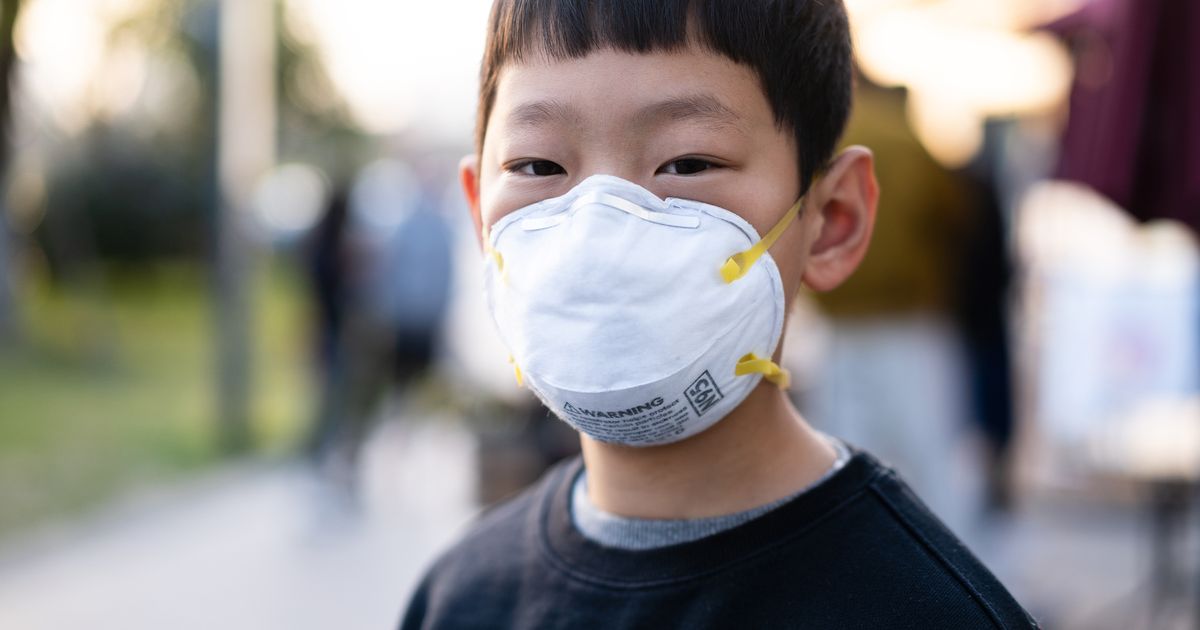During the early days of summer, while parks are usually bustling with children enjoying the long daylight hours, schoolyards and playgrounds in the Northeastern U.S. remain empty due to the dark echo of the pandemic. The air quality in the region is also a concern, with N-95 masks in high demand as the smoke from Canadian wildfires continues to contribute to “unhealthy” and “hazardous” conditions.
In New York City, the air quality index (AQI) reached over 300 on June 7, equivalent to smoking seven cigarettes during a day spent outdoors. Parents are understandably worried about when it will be safe for their children to go outside again and what they can do to protect their health in the meantime. HuffPost spoke with several doctors to gather advice on managing this crisis.
One important step is to stay aware of the air quality index. Dr. Juanita Mora, an allergist and immunologist and spokesperson for the American Lung Association (ALA), suggests keeping track of the AQI using the weather app on your phone. An orange or red day on the index indicates harmful air that can be detrimental to health, especially for vulnerable populations. The AQI measures ozone and particle pollution, including that from wildfire smoke. When the air quality is over 100 (orange), those with underlying respiratory or cardiovascular conditions may be at risk. An AQI of 150 or above (red) is considered “unhealthy,” and even individuals not in high-risk groups may experience symptoms. An AQI over 200 (purple) triggers a health alert for everyone, and once it surpasses 300 (maroon), as it has during the current crisis, it is deemed hazardous and an emergency condition.
It is crucial to understand that children are particularly vulnerable to the effects of poor air quality. Dr. Terry Noah, a pediatric pulmonologist at the University of North Carolina School of Medicine, explains that children’s lungs are still developing, making toxic pollutants more impactful on their future health. Children also tend to engage in more outdoor activities and breathe through their mouths more than adults, which increases their exposure to pollutants. Young children, those with asthma or other respiratory conditions, and those living in resource-poor environments are especially vulnerable.
To protect children’s health, it is advisable to keep them indoors when the AQI is high. Dr. Noah recommends avoiding strenuous outdoor activities when the AQI is above 100, and especially when it exceeds 150. Outdoor sports and games should be put on hold. While outdoor air is generally cleaner than indoor air, this is not the case when the AQI turns orange or red.
Improving indoor air quality is another important measure. Dr. Noah advises minimizing exposure to indoor pollution sources such as smokers, vapers, wood fires, candles, and gas stoves. Installing air conditioners and air purifiers with HEPA filters can provide added protection against fine particle pollution. According to Dr. Stephanie Lovinsky-Desir, Chief of the Pediatric Pulmonary Division at Columbia University Irving Medical Center, good HVAC systems and air filtration, along with reducing indoor sources of pollution, significantly enhance indoor air quality compared to the outdoor environment. However, it is essential to address the issue of equal access to these systems, as they are not readily available to everyone, creating another health equity concern.
When venturing outdoors, it is recommended that children wear N-95/KN-95 masks. Dr. Mora states that these masks effectively block fine particle pollution, reducing the inhalation of smoke. Dr. Lovinsky-Desir adds that children with asthma or other conditions should wear a mask once the AQI exceeds 100, while healthy children should do so at 150 or above. At the current levels of hazardous wildfire smoke, everyone, especially children, should minimize their time outdoors and wear a mask when venturing outside.
Parents should also stay on top of any medical treatments their children receive. If a child has asthma or another condition that makes them vulnerable to air pollution, adhering to maintenance treatments is crucial. Recognizing symptoms of respiratory distress, such as eye irritation, scratchy throat, shortness of breath, chest pain, wheezing, or dry cough, is also important. It is recommended that families communicate with their doctors and have a plan in place should symptoms arise. For more information, parents can refer to reliable sources such as the Centers for Disease Control and Prevention (CDC).
By taking these steps and staying informed, parents can strive to protect their children’s health amidst the current air quality crisis caused by the Canadian wildfires.
Denial of responsibility! VigourTimes is an automatic aggregator of Global media. In each content, the hyperlink to the primary source is specified. All trademarks belong to their rightful owners, and all materials to their authors. For any complaint, please reach us at – [email protected]. We will take necessary action within 24 hours.


